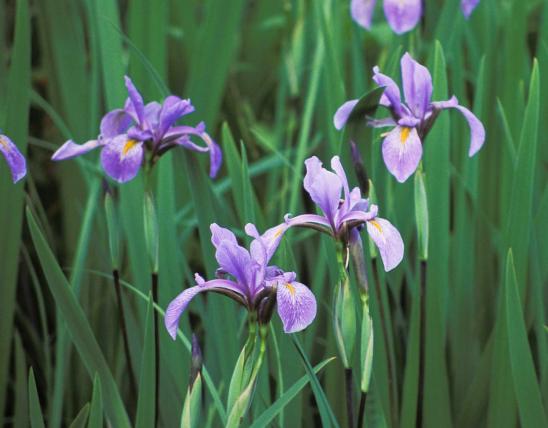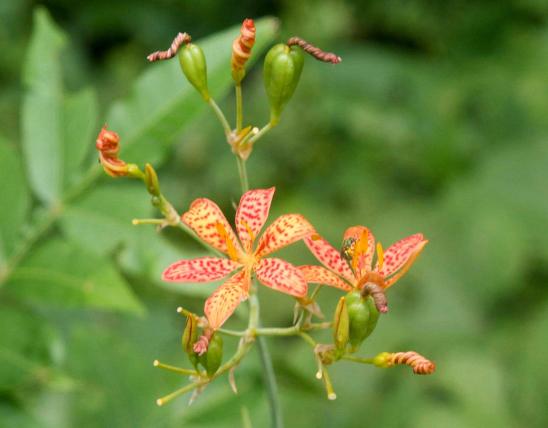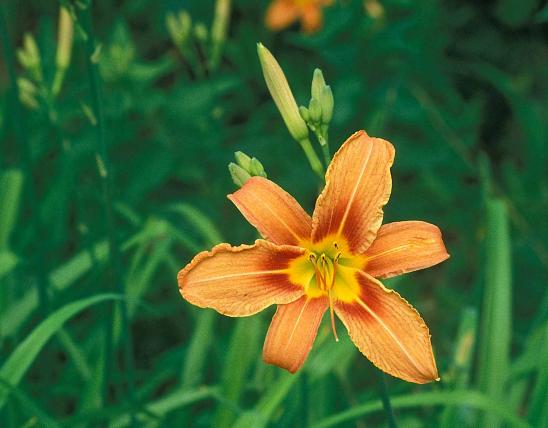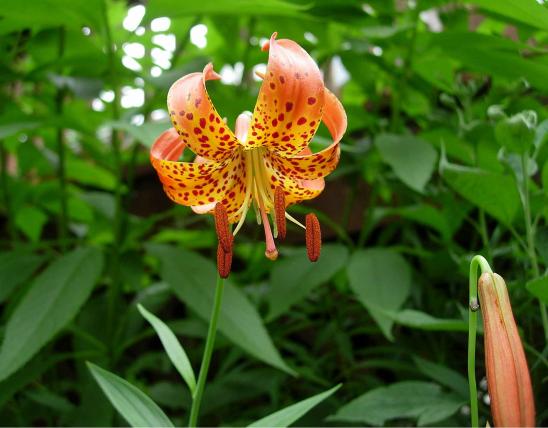
An iris, growing from a rhizome, with bladelike leaves and coppery or reddish flowers. Blooms April through June. Flowers have 3 sepals and 3 petals, and all 6 are orange, copper-colored, or reddish-brown. The 3 petal-like sepals spread widely or arch downward and have 1–3 prominent veins. Sepals often have a lighter, yellow area near the base but lack a “beard” of hairs there. The 3 petals are somewhat narrower than the sepals and are erect or spreading and declining with the sepals. Leaves are bladelike, arching or nodding, and emerge from the rhizome and occur along the flower stems.
Height: 2–3 feet; spread: 1–2 feet.

Scattered in the Mississippi Lowlands of southwestern Missouri; also used statewide in garden plantings.
Habitat and Conservation
Swamps and bottomland forests, and along the edges of sloughs, ditches, canals, and ponds, often in shallow water. This flower has been losing its wild habitat in our state, as the swamps of southeastern Missouri have been drained and herbicides applied to ditches, so it is becoming less common in the wild. It is a species that should be used more often in home gardens.
Status
Declining in the wild due to draining of swamps, dredging operations, and herbicides applied to ditches.
Human Connections
Copper iris is a pretty native iris that can flourish in the home garden, especially near a pond or stream, where the soil is rich and moist. It prefers full or part sun and attracts butterflies and hummingbirds.
Ecosystem Connections
Plants that grow in bogs and other low, wet areas do a tremendous service in filtering water of impurities and silt before it runs into creeks and rivers or enters the groundwater system. This species also provides food for hummingbirds and insects, including moths.































